If you’re a climber or an avid hiker, then you likely know about the beauty of Colorado. There are so many trails and mountains to explore. However, there’s nothing more interesting and challenging to hike than the 14ers in Colorado.
These mountains are a challenge. Even their easiest 14ers pose a bit of a challenge due to their hiking distance and elevation gain. If you want to learn more about these 14ers, including their elevation and difficulty, continue reading.
What Are 14ers?

Colorado is home to many beautiful mountain ranges.
©Galyna Andrushko/Shutterstock.com
At the basic level, to be considered a 14er, a mountain must have a peak at or above 14,000 feet elevation. However, there are generally a few other stipulations put on mountains before they’re considered 14ers.
The most common one is that there must also be topographical prominence. This is the difference between the height of the summit of a mountain and the lowest contour line that circles it.
To be included in most lists, this height difference must be at least 300 feet.
West of the Mississippi River, there are a total of 96 14ers in the United States. Colorado has the most of any state, with Alaska following behind with 29.
How Many 14ers Are in Colorado?
You might expect this to be a fairly straightforward question, but it’s not quite so easy to answer. Depending on who you ask, you might get several numbers. However, 53 and 58 are the most common.
53 is the standard response. This is the number of 14ers in Colorado that also have 300 feet of prominence. However, 58 takes into account all of the 14ers in the state recognized and named that have at least 14,000 feet elevation, no matter what their prominence is.
All of the 14ers in Colorado
The 53 official 14ers in Colorado (and 5 that aren’t), are listed below, broken into their difficulty classes.
Class 1

Pikes Peak is a Class 1 14er in Colorado.
©Jessica R. McNair/Shutterstock.com
Class 1 is the easiest of all the classes. The trails are often easy to navigate and well-marked. Make no mistake, they aren’t easy hikes by any means, but they are the easiest out of all the 14ers. They often also have shorter distances to hike and more gradual or overall lesser elevation gain.
- Pikes Peak: Elevation of 14,115 feet.
- Mt. Elbert: Elevation of 14,440 feet.
- Torrys Peak: Elevation of 14,275 feet.
- Quandary Peak: Elevation of 14,271 feet.
- Grays Peak: Elevation of 14,278 feet.
- San Luis Peak: Elevation of 14,022 feet.
- Mt. Sherman: Elevation of 14,043 feet.
- Handies Peak: Elevation of 14,058 feet.
Class 2
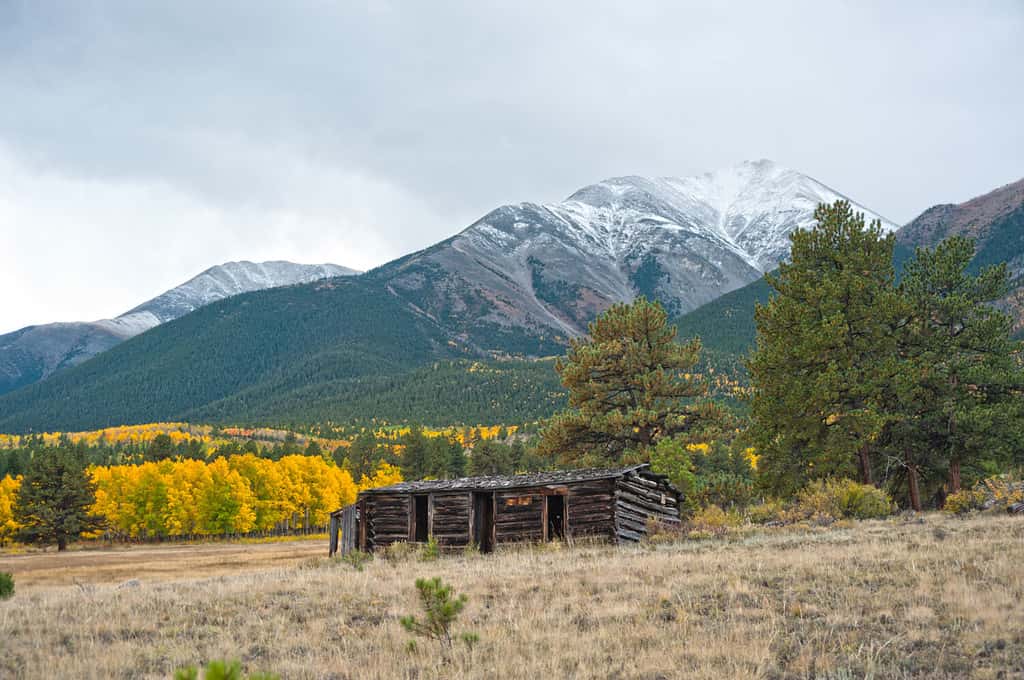
Mount Princeton is located in Chaffee County, Colorado, and is a Class 2 mountain.
©PhotoTrippingAmerica/Shutterstock.com
For most Class 2 trails, you’ll have some parts that are off-trail. There may be areas of relative ease, but some of it will feature loose rock, or struggling to catch your balance.
- Mt. Bross: Elevation of 14,178 feet.
- La Planta Peak: Elevation of 14,343 feet.
- Mt. Democrat: Elevation of 14,155 feet.
- Mt. Columbia: Elevation of 14,077 feet.
- Mt. of the Holy Cross: Elevation of 14,011 feet.
- Mt. Massive: Elevation of 14,428 feet.
- Mt. Belford: Elevation of 14,203 feet.
- Uncompahgre Peak: Elevation of 14,321 feet.
- Mt. Bierstadt: Elevation of 14,065 feet.
- Missouri Mountain: Elevation of 14,074 feet.
- Mt. Shavano: Elevation of 14,231 feet.
- Mt. Harvard: Elevation of 14,42 feet.
- Huron Peak: Elevation of 14,010 feet.
- Sunshine Peak: Elevation of 14,007 feet.
- Humboldt Peak: Elevation of 14,070 feet.
- Tabeguache Peak: Elevation of 14,162 feet.
- Culebra Peak: Elevation of 14,053 feet.
- Mt. Yale: Elevation of 14,200 feet.
- Mt. Oxford: Elevation of 14,160 feet.
- Mt. Blue Sky: Elevation of 14,271 feet.
- Mt. Antero: Elevation of 14,276 feet.
- Mt. Lincoln: Elevation of 14, 293 feet.
- Mt. Princeton: Elevation of 14,204 feet.
- Redcloud Peak: Elevation of 14,041 feet.
Difficult Class 2
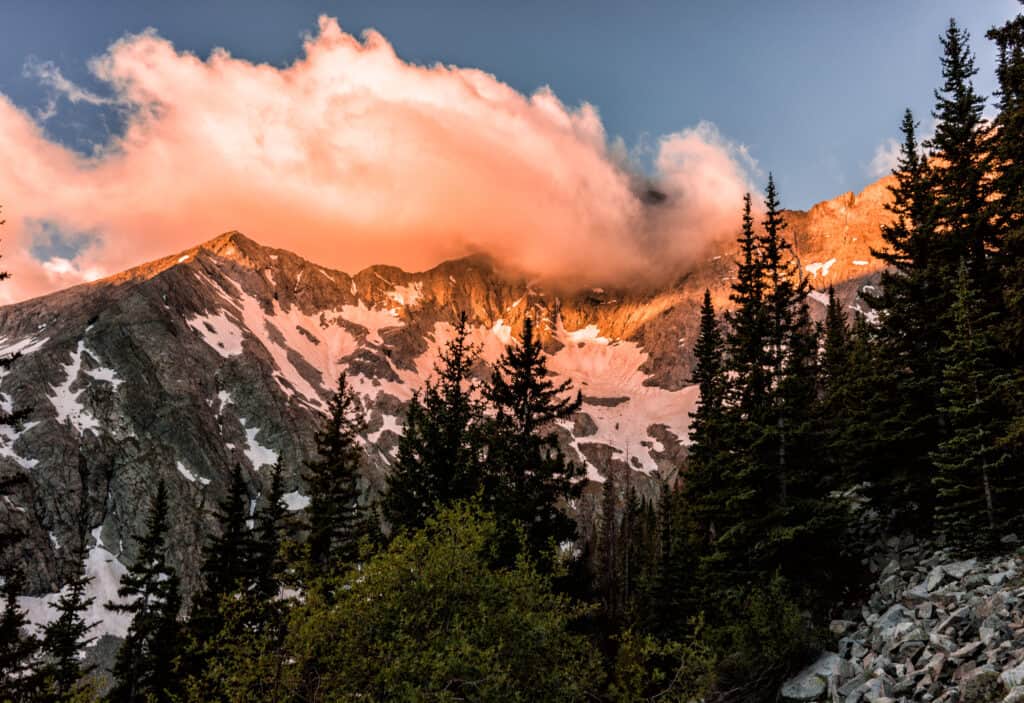
Blanca Peak is known for the three jagged peaks that make up the summit of the mountain.
©Nicholas Courtney/Shutterstock.com
Difficult Class 2 trails still fall under the last category, but have more difficult terrain than average.
- Windom Peak: Elevation of 14,093 feet.
- Blanca Peak: Elevation of 14,351 feet.
- Castle Peak: Elevation of 14,279 feet.
- Ellingwood Point: Elevation of 14,048 feet.
Easy Class 3
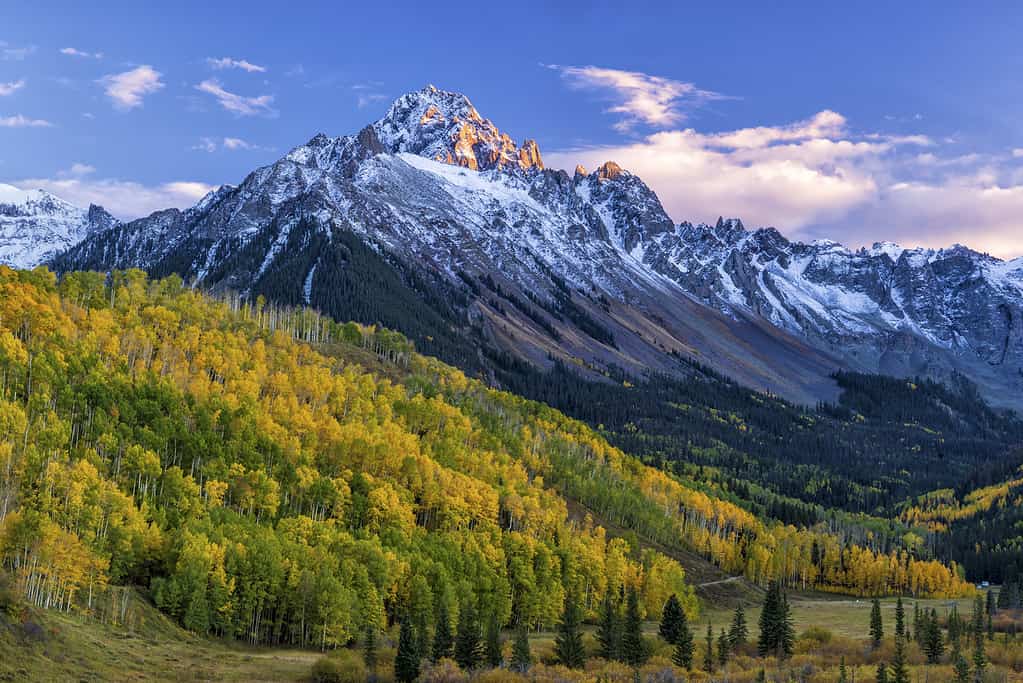
Mt. Sneffels is near Ridgway, Colorado. It’s an Easy Class 3.
©lightphoto/iStock via Getty Images
Easy Class 3 is a little harder than Difficult Class 2. You may have to do some climbing, or deal with extreme terrain and elevation climbs. However, they’re not quite as bad as most Class 3s.
- Mt. Sneffels: Elevation of 14,158 feet.
- Kit Carson Peak: Elevation of 14,171 feet.
- Mt. Lindsey: Elevation of 14,048 feet.
Class 3
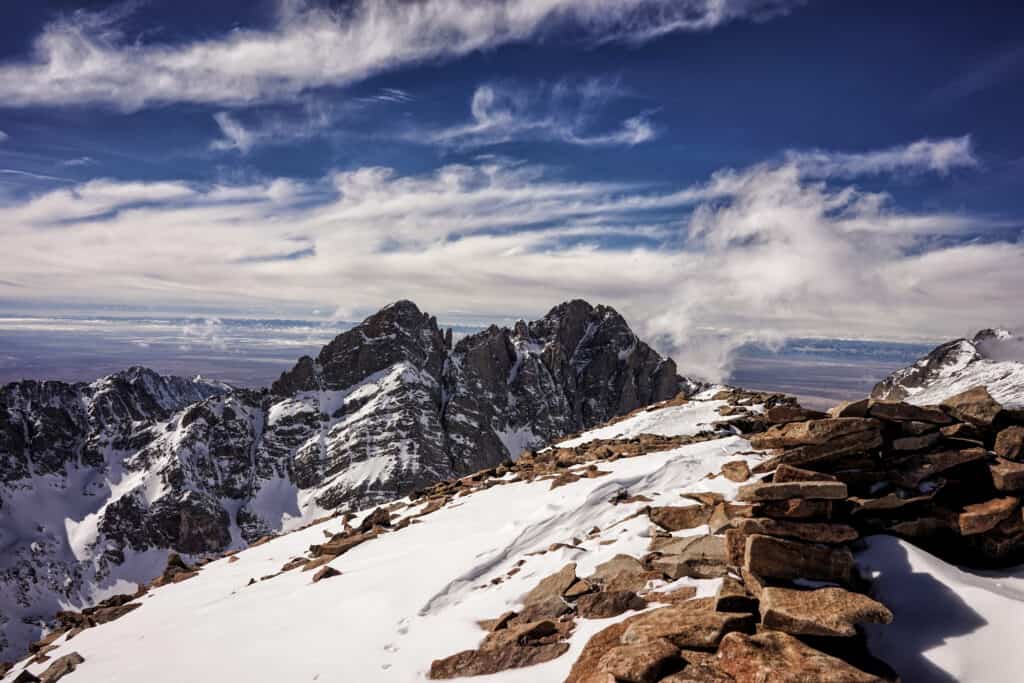
Crestone Peak is located within the Rio Grande National Forest. It’s not the highest peak in the Rocky Mountains but it’s the most challenging for many hikers.
©Nicholas Courtney/Shutterstock.com
Class 3s involve climbing some areas, but not to the point you need a rope. There are also quite a few times you have to use your hands to keep your balance or to get up a difficult area of the trail.
- Wetterhorn Peak: Elevation of 14,021 feet.
- Crestone Peak: Elevation of 14,300 feet.
- Maroon Peak: Elevation of 14,163 feet.
- Longs Peak: Elevation of 14,259 feet.
- Wilson Peak: Elevation of 14,023 feet.
- Snowmass Mountain: Elevation of 14,093 feet.
- Mt. Eolus: Elevation of 14,090 feet.
Class 4
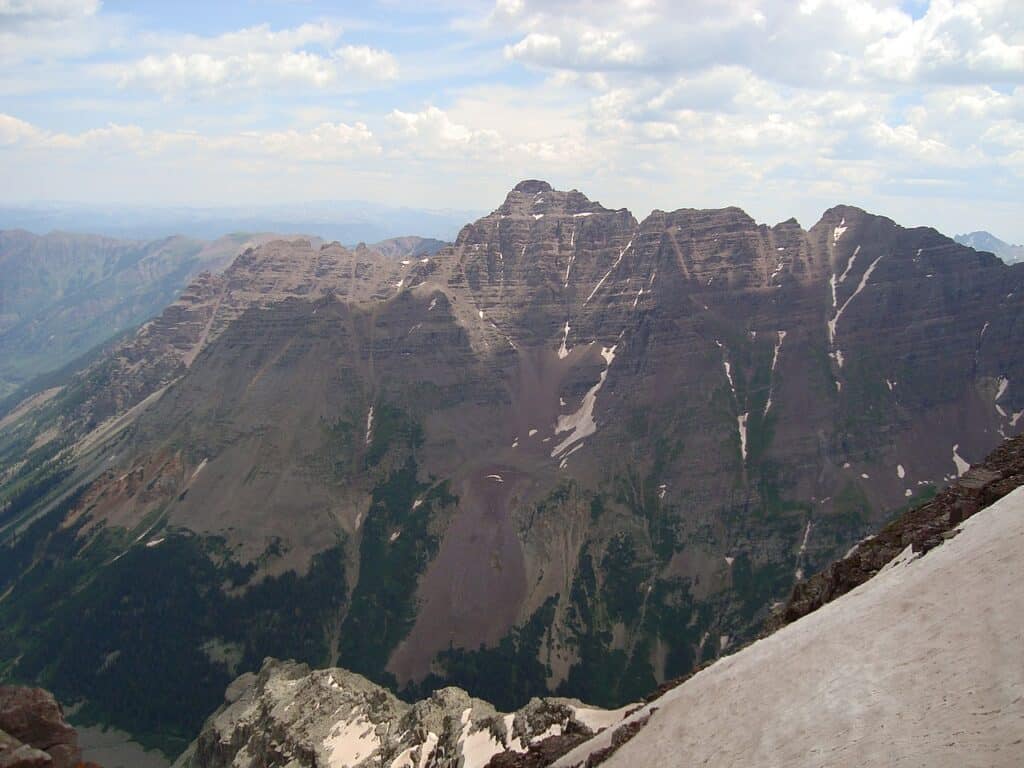
Pyramid Peak is one of the Class 4 mountains in Colorado.
Class 4 is the highest class in Colorado as far as 14ers go. These mountains involve a fair amount of climbing, sometimes with ropes. The terrain can be rather steep and dangerous.
- North Maroon Peak:
- Capitol Peak: Elevation of 14,137 feet.
- Crestone Needle: Elevation of 14,203 feet.
- Little Bear Peak: Elevation of 14,043 feet.
- Sunlight Peak: Elevation of 14,065 feet.
- Mt. Wilson: Elevation of 14,252 feet.
- Pyramid Peak: Elevation of 14,025 feet.
Mountains Not Traditionally Included

Conundrum Peak is technically a 14er, but the prominence isn’t tall enough to count.
©Kristi Blokhin/Shutterstock.com
These are the other five mountain peaks not often included on lists, despite being 14ers. This is because their prominence is below 300 feet.
- Mt. Cameron: Elevation of 14,248 feet, but a prominence of only 152 feet. Class 2 trail.
- North Elous: Elevation of 14,042 feet, but a prominence of only 212 feet. Class 3 trail.
- Conundrum Peak: Elevation of 14,037 feet, but a prominence of only 225 feet. Difficult Class 2 trail.
- Challenger Point: Elevation of 14,086, but a prominence of only 264 feet. Difficult Class 2 trail.
- El Diente Peak: Elevation of 14,175, but a prominence of only 264 feet. Class 3 trail.
The photo featured at the top of this post is © Sean Xu/Shutterstock.com
Thank you for reading! Have some feedback for us? Contact the AZ Animals editorial team.







